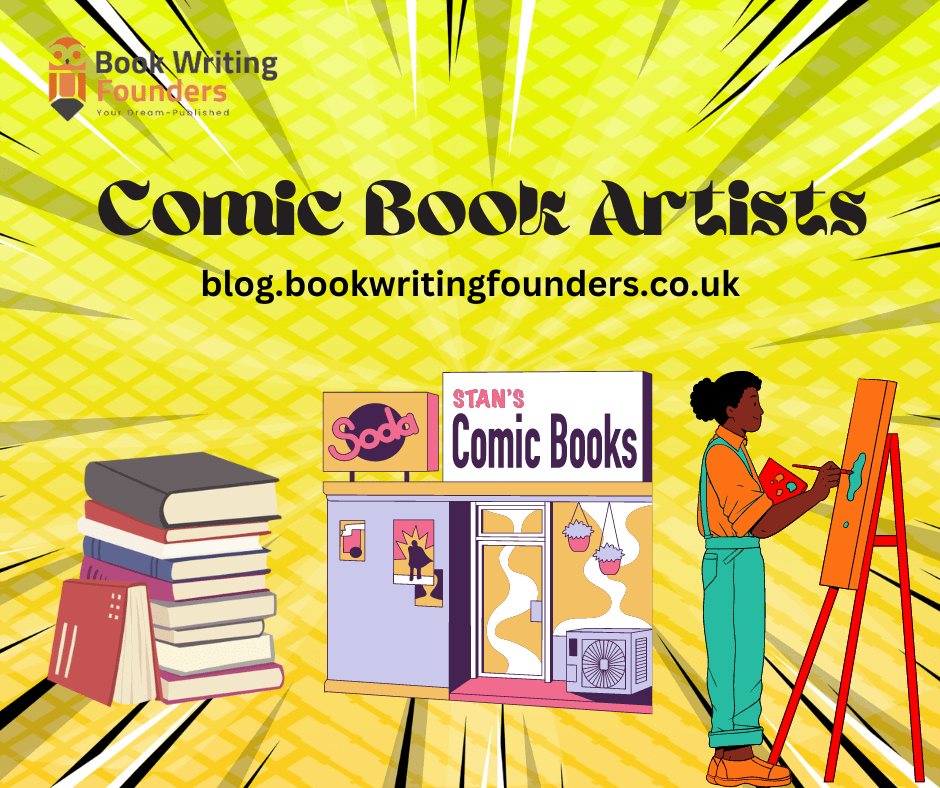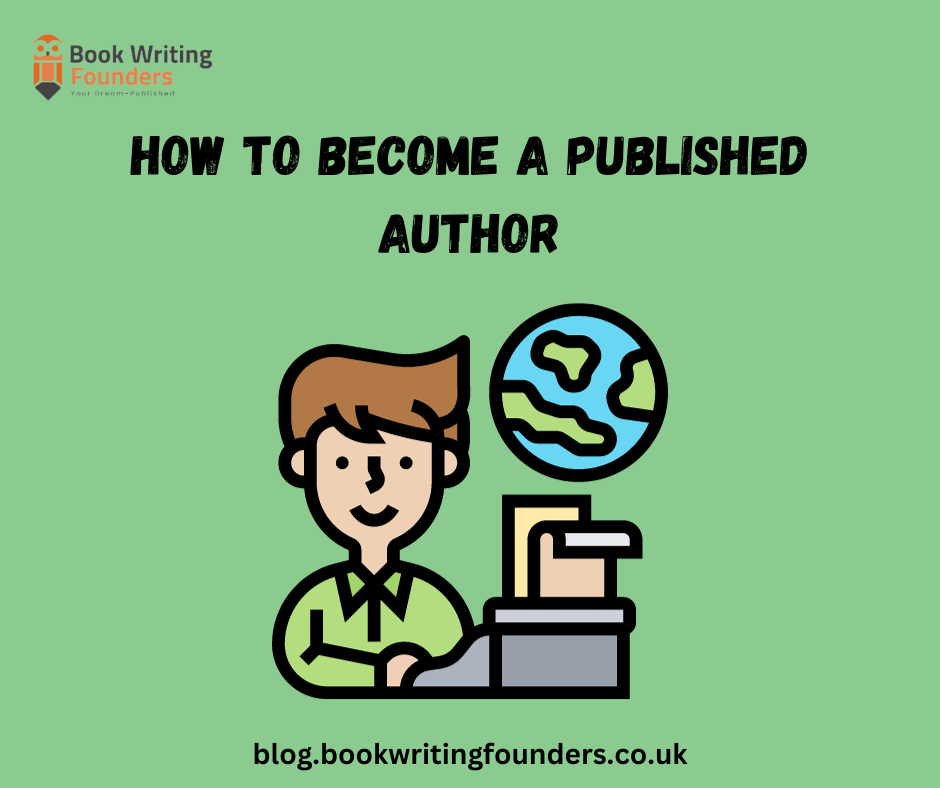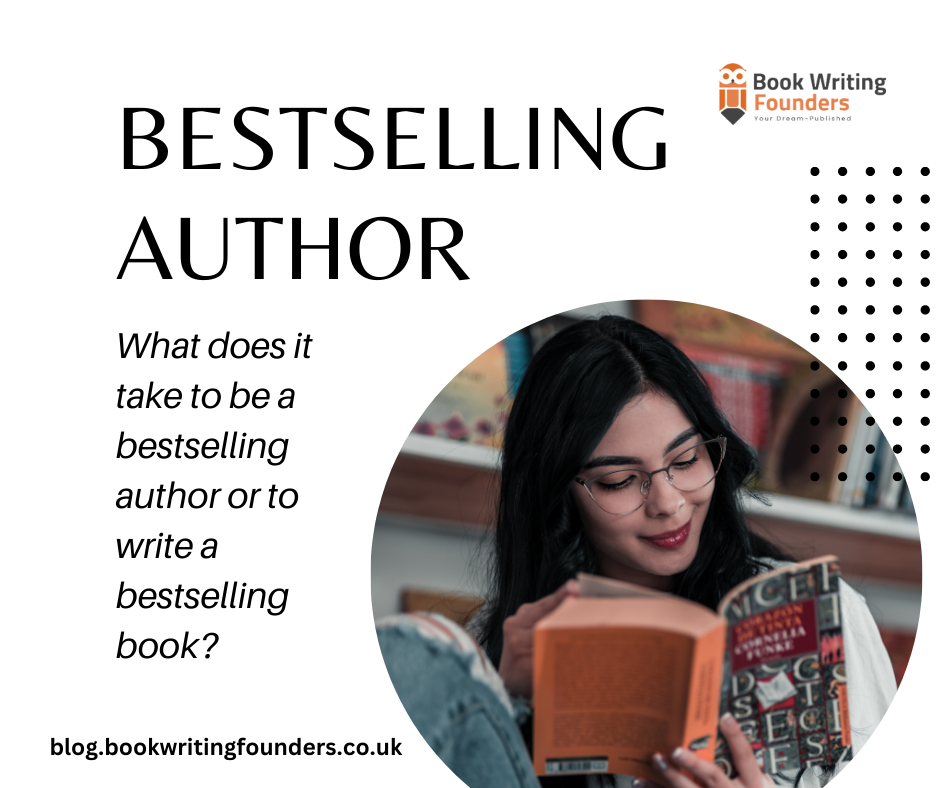
Book
Introduction
If you like comic books and are impressed by the cool drawings you see in series like Amazing Spider-Man, Batman, or Fantastic Four, then you’ll like this article. We will talk about the 12 most famous comic book artists ever. This list isn’t the only great artists out there, but we’ll focus on the ones that fans and communities love the most. Keep reading to learn about some of the world’s most popular comic book artists!
Who Are Comic Book Artists?
Comic book artists are the creative minds behind the colorful characters and action-packed scenes you see in success stories. They use their artistic skills to bring stories to life through drawings and illustrations. These artists are essential in shaping popular culture and entertainment as they transform written scripts into captivating visual narratives. Their work can influence various forms of media, from TV shows to movies and beyond. Essentially, comic book artists are storytellers who use their talent to craft exciting worlds and characters that capture the imaginations of audiences everywhere.
Here is the list of 12 comic book artist
Jack Kirby: The King of Comics
Jack Kirby, often hailed as the “King of Comics,” is one of the most influential figures in the medium’s history. His collaboration with Stan Lee at Marvel Comics birthed a plethora of iconic characters, including the Fantastic Four, the X-Men, and the Avengers. Kirby’s dynamic artwork and innovative storytelling techniques revolutionized superhero comics and laid the foundation for the Marvel Universe as we know it today.
Stan Lee: The Marvel Legend
No discussion of comic book artists would be complete without mentioning Stan Lee, the co-creator of many of Marvel’s most beloved characters. Lee’s partnership with Jack Kirby and other artists brought about a new era of storytelling in comics, characterized by flawed and relatable superheroes. His charismatic writing routine and knack for creating vibrant characters have left an indelible mark on the industry.
Frank Miller: Revolutionizing the Dark and Gritty
Frank Miller is credited with revolutionizing how we perceive comic books with his dark and gritty storytelling style. His seminal works, such as “The Dark Knight Returns” and “Sin City,” pushed the boundaries of the medium and ushered in a new era of adult-oriented comics. Miller’s unique blend of noir aesthetics and psychological depth has profoundly influenced the comic book landscape.
Alan Moore: The Master of Deconstruction
Alan Moore is regarded as one of the greatest comic book writers ever known for his deconstructive approach to crime fiction. Works like “Watchmen” and “V for Vendetta” challenged traditional notions of heroism and morality, pushing the medium into uncharted territory. Moore’s intricate narratives and thought-provoking themes continue to inspire generations of writers and artists.
Neil Gaiman: Crafting Mythical Narratives
Neil Gaiman is a master storyteller known for his ability to weave captivating tales that blend mythology with modernity. His seminal series “Sandman” redefined what comics could achieve, exploring themes of dreams, storytelling, and the nature of reality. Gaiman’s lush prose and vivid imagination have earned him a devoted fanbase and cemented his status as one of the industry’s most influential figures.
Jim Lee: The Modern Icon
Jim Lee rose to prominence in the 1990s as one of the driving forces behind the popularity of characters like the X-Men and Batman. His dynamic artwork and meticulous attention to detail have made him one of the industry’s most recognizable and sought-after artists. In addition to his work at Marvel and DC Comics, Lee co-founded Image Comics, where he continues to push the boundaries of visual storytelling.
Todd McFarlane: Redefining Spider-Man
Todd McFarlane is best known for his groundbreaking work on Spider-Man in the late 1980s, where he introduced a new level of dynamic energy and fluidity to the character’s movements. His distinctive art style and penchant for intricate detail set a new standard for superhero comics, influencing countless artists in the years to come. McFarlane’s creative vision extended beyond comics by creating Spawn, one of the most successful independent comic book characters ever.
Brian Bolland: Master of Detail
Brian Bolland is revered for his unparalleled attention to detail and mastery of the comic book medium. His work on “The Killing Joke,” written by Alan Moore, is considered one of the definitive Batman stories of all time. Bolland’s meticulous linework and expressive characterizations have earned him a reputation as one of the industry’s top talents, with a body of work that continues to inspire artists and readers alike.
Dave Gibbons: Collaborator Extraordinaire
Dave Gibbons is best known for his collaboration with Alan Moore on “Watchmen,” widely regarded as one of the greatest graphic novels ever written. Gibbons’s clean linework and innovative panel layouts were crucial in bringing Moore’s vision to life, earning him numerous awards and accolades. Beyond “Watchmen,” Gibbons has enjoyed a prolific career spanning multiple genres and mediums, solidifying his status as a true craft master.
John Romita Sr.: Shaping the Silver Age
John Romita Sr. is synonymous with the Silver Age of comics, having made significant contributions to the medium during this pivotal period. His work on Spider-Man helped define the character’s iconic look, introducing elements such as the black symbiote suit and Gwen Stacy. Romita’s clean and dynamic artwork set the standard for superhero comics of the era, influencing generations of artists to come.
Steve Ditko: Co-Creator of Icons
Steve Ditko is perhaps best known for his co-creation of Spider-Man alongside Stan Lee, a character whose enduring popularity continues to captivate audiences worldwide. Ditko’s distinctive art style and flair for dynamic storytelling helped establish Spider-Man as one of Marvel’s flagship characters. Beyond Spider-Man, Ditko’s contributions to the medium include the creation of Doctor Strange and numerous other iconic characters.
Amanda Conner: The Trailblazing Artist
Amanda Conner is a trailblazing comic book artist known for her dynamic and expressive artwork. With a career spanning over two decades, Conner has worked on iconic characters like Harley Quinn, Power Girl, and Wonder Woman. Her bold, energetic style and keen eye for storytelling have earned her a dedicated fan following and cemented her status as one of the industry’s top talents. Conner’s contributions to the world of comics continue to inspire and influence artists around the globe.
Criteria for Selecting Excellent Comic Book Artists
Selecting excellent comic book artists involves evaluating a combination of artistic skill, storytelling ability, creativity, and impact on the industry. Here are several criteria that are commonly used to assess and recognize excellent comic book artists:
Artistic Skill and Technique:
Mastery of drawing, composition, anatomy, perspective, and other fundamental artistic skills.
Ability to convey emotions, action, and atmosphere through visuals.
Consistency in delivering high-quality artwork across panels, pages, and projects.
Visual Storytelling:
Proficiency in sequential storytelling, effectively guiding readers through the narrative flow of the comic.
Skill in using panel layouts, pacing, and framing to enhance storytelling and create dynamic and engaging visuals.
Clarity in conveying complex scenes, action sequences, and character interactions through imagery.
Creativity and Innovation:
Originality in character design, world-building, and visual aesthetics.
Willingness to experiment with artistic styles, techniques, and storytelling approaches.
Ability to push the boundaries of the medium and introduce new concepts, themes, and storytelling conventions.
Impact on the Industry:
Influence on the comic book industry and the development of artistic trends.
Creating iconic characters, stories, and visual motifs that resonate with audiences and endure over time.
Recognition and accolades from peers, critics, and industry professionals for significant contributions to the medium.
Versatility and Adaptability:
Ability to work across different genres, formats, and platforms, demonstrating versatility in artistic style and storytelling approach.
Capacity to collaborate effectively with writers, editors, and other book cover design services to bring their vision to life.
Adaptability to evolving technologies and industry trends, staying relevant and innovative in an ever-changing landscape.
Professionalism and Work Ethic:
Dedication to meeting deadlines and delivering work of consistently high quality.
Professional conduct, including communication, collaboration, and adherence to industry standards and best practices.
Commitment to continuous improvement and lifelong learning, striving to refine and expand artistic skills and storytelling abilities.
Fan and Industry Recognition:
Positive book reviews from comic fans are evidenced by fan engagement, fan art, cosplay, and other forms of fandom.
Awards, nominations, and honors received from reputable industry organizations and publications, such as the Eisner Awards, Harvey Awards, and Inkwell Awards.
How do Comic Book artists select Narrative Voice?
Choosing how to tell a story in comics is crucial for its impact. Comic book creators collaborate to select the narrative voice, considering genre, character perspective, reader engagement, story structure, visual style, target audience, and their creative vision. The genre and tone influence whether to use first-person or third-person narration.
The character’s perspective aligns with the protagonist’s viewpoint. Engaging readers involves selecting a voice that captivates and immerses them in the story. The voice should complement the story’s structure, whether linear or nonlinear. Visual style affects the level of detail in narration. The target audience dictates the complexity of the narrative. Ultimately, creative vision guides the voice selection for a cohesive storytelling experience.
Conclusion
Comic book artists play a vital role in shaping the industry, bringing imagination and creativity to life with every pen stroke. From the pioneering work of Jack Kirby and Stan Lee to the groundbreaking contributions of Frank Miller and Alan Moore, these artists have pushed the boundaries of storytelling and visual expression, leaving an indelible mark on the medium.





